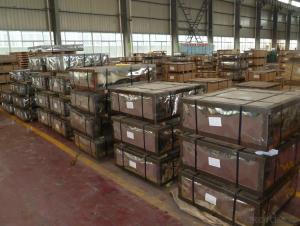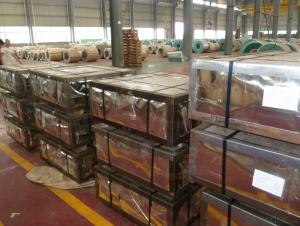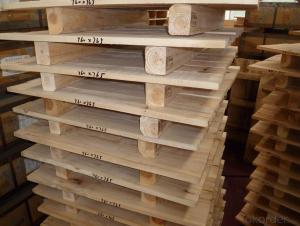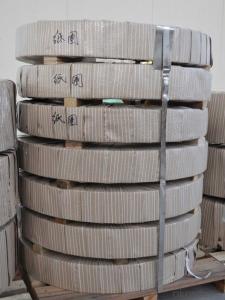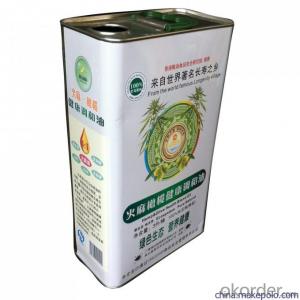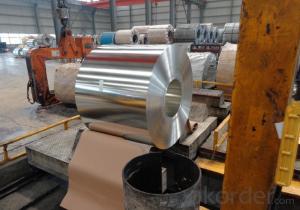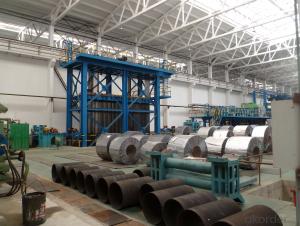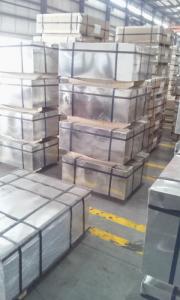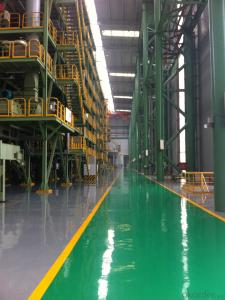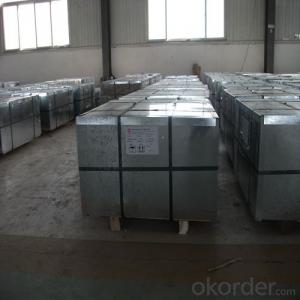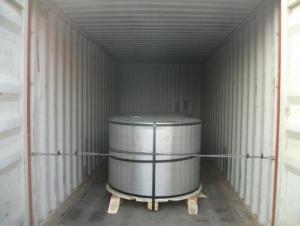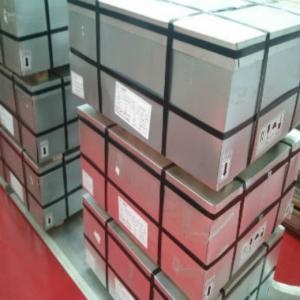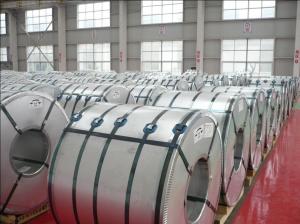PRIME QUALITY ELECTROLYTIC TINPLATE SHEETS
- Loading Port:
- Shanghai
- Payment Terms:
- TT or LC
- Min Order Qty:
- 25 m.t.
- Supply Capability:
- 1000 m.t./month
OKorder Service Pledge
OKorder Financial Service
You Might Also Like
Prime quality tinplate for SPCC and MR Use
1.Structure of Description
Prime quality tinplate for SPCC and MR Use for Making Cansis one of the metal packing materials, which is widely used for making painting cans ,chemical package cans , electrical cable ,battery and metal printing etc.
2. Main Features
Steady and high quality
Fast shipment
Good experience for export work
For the surface, Plate uniform in thickness,uniform and smooth tin coating, without flaws,rusts,scratch,wave,nick of tin coating etc.
Price competitive
3. Images
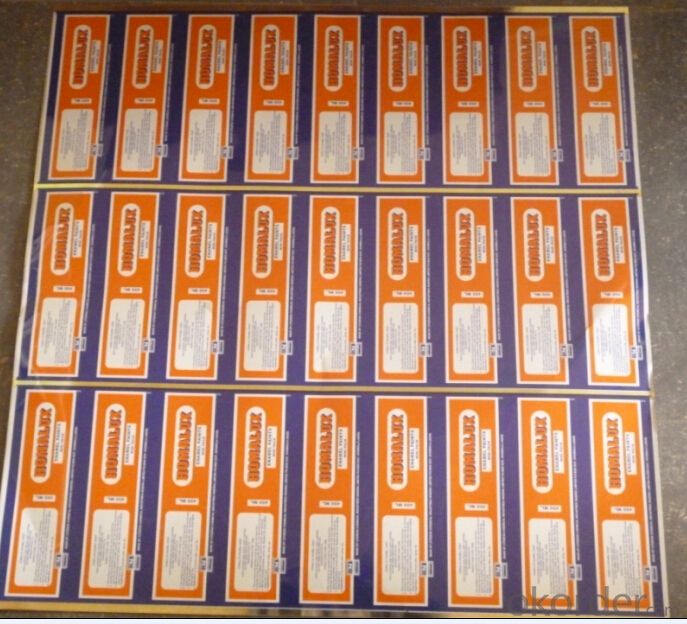
4. Specification
Standard : GB2520-2000 ,JIS G3303
Steel type : SPCC
Coating : 2.8/2.8
Surface: Bright, Stone ,
Thickness:0.31
Width :600MM~1000MM
Temper : T1~T5
Package: tinplate wrapped completely with an inner cover of plastic or waterproof papers with vorners protected with metal angels.
5.FAQ
A. What is the package of tinplate? (Referred as below)
For sheets, thin plastic film + rust-proof paper + metallic cover + metallic angles+ steel band strips + fumigated wooden pallet.
For coil, thin plastic film + rust proof paper + metallic cover + steel band strips + fumigated wooden pallet
B. The surface of tinplate could you supply?
Stone finish, Bright finish, Matte finish, Silver finish
C: Can you make some printing for those tinplates?
Yes,we can, normally for clear oil, or golden color or four color printing.
- Q: How is tinplate coated with organic materials for specific applications?
- Tinplate can be coated with organic materials for specific applications through a process called organic coating or lacquering. In this process, a thin layer of organic material, such as polymer or lacquer, is applied onto the surface of the tinplate. This coating provides various benefits like corrosion resistance, improved aesthetic appearance, and enhanced durability. The organic coating can be applied through methods like roll coating, spray coating, or electrostatic deposition, depending on the specific requirements of the application.
- Q: What are the main growth opportunities for the tinplate industry?
- The main growth opportunities for the tinplate industry include the increasing demand for packaged food and beverages, the rising popularity of sustainable packaging solutions, and the growing automotive sector requiring tinplate for various applications. Additionally, emerging markets and technological advancements in tinplate production processes offer significant growth potential for the industry.
- Q: Can tinplate be used for electrical components?
- Yes, tinplate can be used for electrical components. Tinplate is a thin sheet of steel coated with a layer of tin, which provides corrosion resistance and electrical conductivity. It is commonly used in the manufacturing of electrical components such as cans, connectors, and terminals.
- Q: What are the considerations for handling and storing tinplate coils?
- There are several considerations for handling and storing tinplate coils. Firstly, it is important to handle the coils with care to prevent any damage or deformation. This includes using appropriate lifting equipment, avoiding dropping or dragging the coils, and ensuring a smooth and controlled transfer process. Secondly, the storage environment should be suitable for tinplate coils. They should be stored in a clean, dry, and well-ventilated area to prevent corrosion and rusting. It is recommended to keep the coils away from direct sunlight, extreme temperatures, and moisture. Additionally, proper stacking and organization of the coils is crucial. They should be stacked on flat and stable surfaces, with adequate support and spacing between each coil. Labeling the coils with relevant information such as date of manufacture, size, and grade can aid in efficient inventory management. Lastly, regular inspections should be conducted to identify any potential issues or defects. This includes checking for any signs of corrosion, dents, or scratches that may have occurred during handling or storage. Prompt action should be taken to address any problems to ensure the quality and integrity of the tinplate coils.
- Q: How can tinplate be customized for branding purposes?
- Tinplate can be customized for branding purposes through various methods such as printing, embossing, and labeling. The use of high-quality printing techniques allows for intricate designs, logos, and product information to be directly printed on the tinplate surface. Embossing techniques can add a three-dimensional effect to the branding, making it visually appealing and unique. Additionally, labels can be affixed to the tinplate, providing flexibility in changing branding elements or promoting different product lines. These customization options help businesses effectively market their brand and enhance their product's visibility on store shelves.
- Q: Cookies with tinplate packaging has what advantage
- Tinplate has obvious superiority compared with other packaging materials.
- Q: What are the main challenges in tinplate recycling?
- One of the main challenges in tinplate recycling is the separation of tin from steel, as they are bonded together. This process requires specialized equipment and technologies, which can be costly and time-consuming. Another challenge is the presence of contaminants, such as food residues or paints, which need to be removed before recycling. Additionally, the collection and sorting of tinplate waste from various sources can be logistically complex. Overall, addressing these challenges requires efficient recycling infrastructure, advanced separation techniques, and increased awareness among consumers and industries about the importance of tinplate recycling.
- Q: Can tinplate be used for packaging chemicals?
- Yes, tinplate can be used for packaging chemicals. Tinplate is a type of steel coated with a thin layer of tin, which provides excellent resistance to corrosion and is known for its durability and stability. These properties make it suitable for storing and transporting various chemicals safely. Additionally, tinplate can be manufactured into various shapes and sizes, making it a versatile option for chemical packaging.
- Q: Can tinplate be used for packaging electronic components?
- Yes, tinplate can be used for packaging electronic components. Tinplate is a commonly used material in the packaging industry due to its excellent strength, durability, and corrosion resistance. It provides effective protection to electronic components and helps in preserving their quality during storage and transportation.
- Q: What are the main factors influencing the price volatility of tinplate?
- The main factors influencing the price volatility of tinplate include fluctuations in demand and supply, changes in production costs, global economic conditions, geopolitical events, and government regulations and policies. Additionally, factors like changes in exchange rates, technological advancements, and environmental concerns can also impact the price volatility of tinplate.
Send your message to us
PRIME QUALITY ELECTROLYTIC TINPLATE SHEETS
- Loading Port:
- Shanghai
- Payment Terms:
- TT or LC
- Min Order Qty:
- 25 m.t.
- Supply Capability:
- 1000 m.t./month
OKorder Service Pledge
OKorder Financial Service
Similar products
Hot products
Hot Searches
Related keywords
